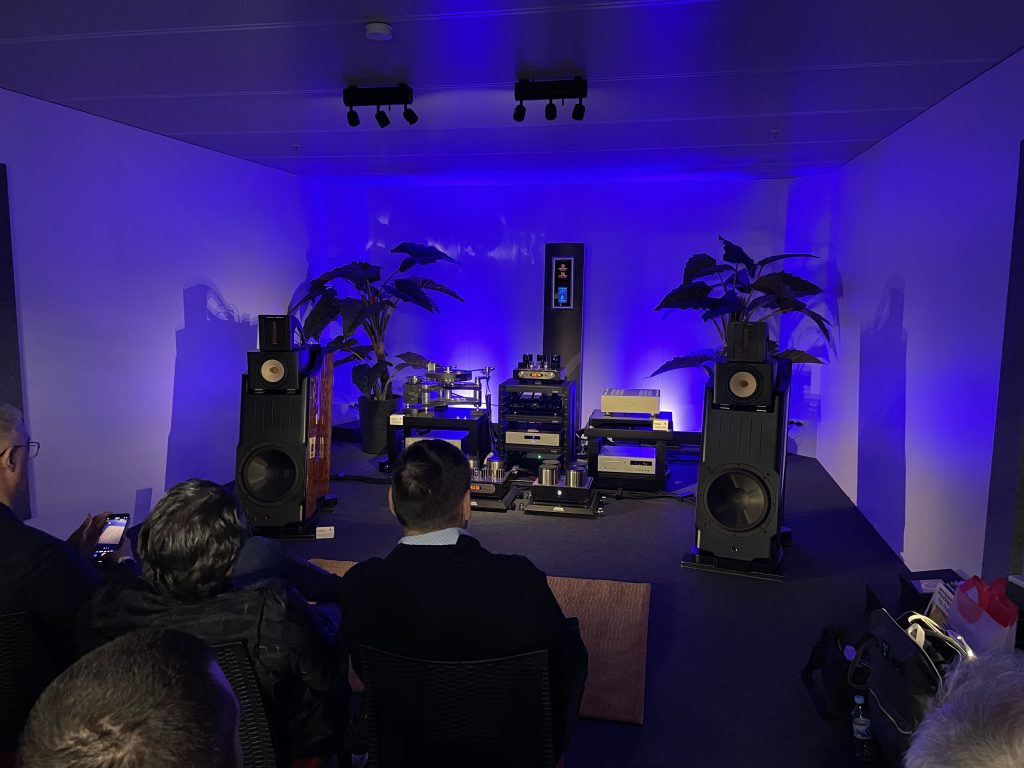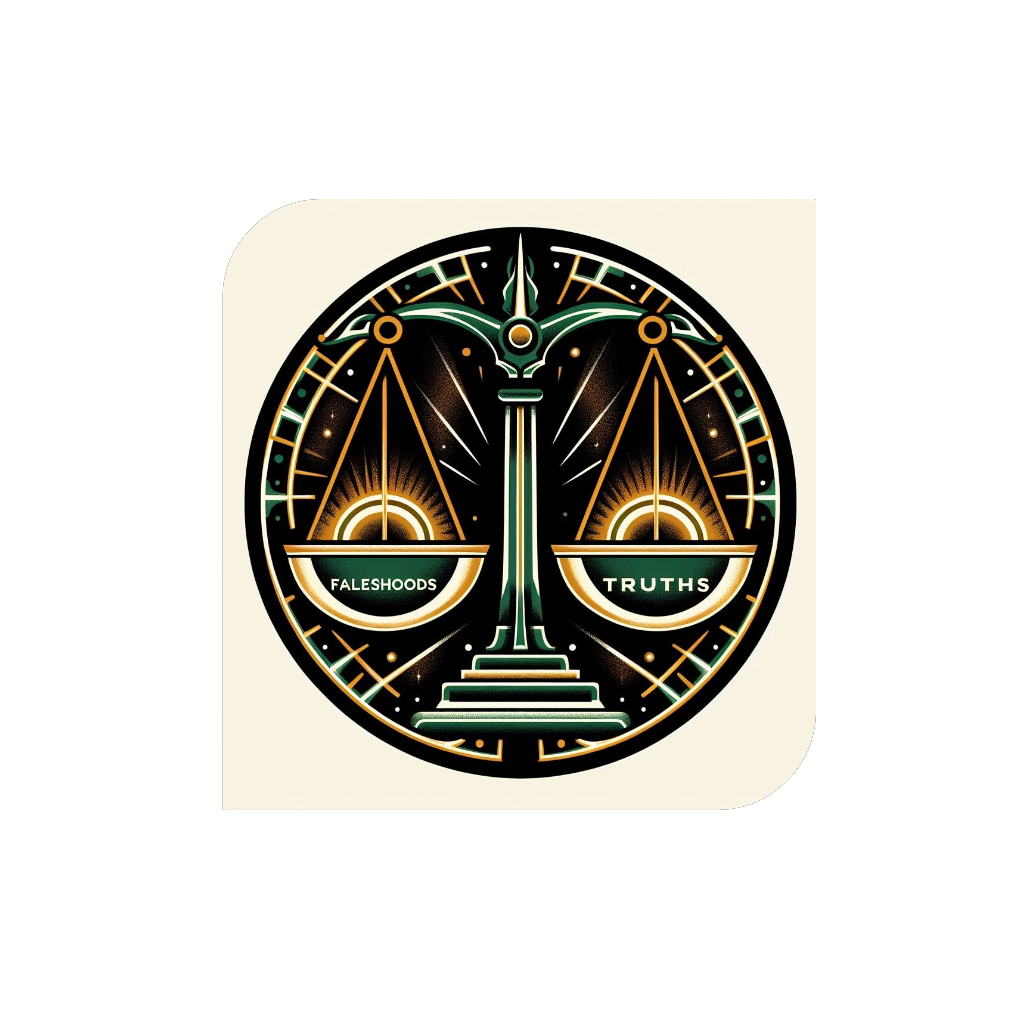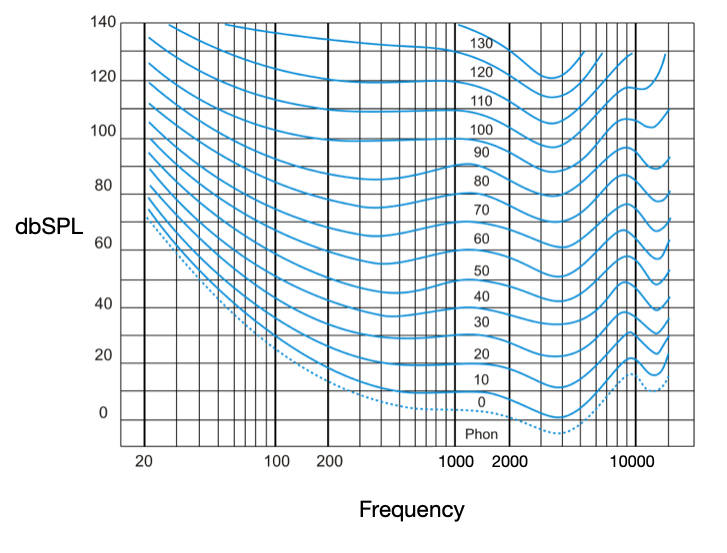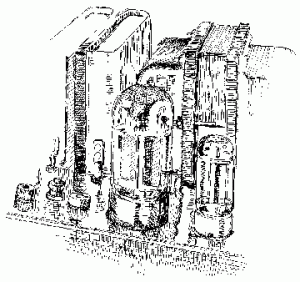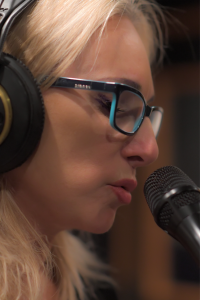Norman Varney of AV RoomService Ltd. has joined Positive Feedback as a Senior Technical Editor as of Issue 113. His expertise in his field of audio acoustics and experience in the field makes him a helpful voice in our creative community for the audio arts. As has been our wont from the beginning of PF, we do welcome contributions from qualified voices in the high-end audio industry, provided that they don't use the opportunity to market their own products/attack competitors and others...which we simply don't allow here.
I love doing trade shows. I like meeting people in person, networking, helping solve acoustic issues, learning and conversing with other professionals over dinner. I have been to many trade shows in my life. My first was AES in the mid-seventies checking out new recording gear with guitarist Larry Carlton. Since then, I have been on all sides and worn all the hats. I have been at NAMM, CEDIA, INCE, ASA, AES, CES, etc. for decades. Post Covid, I have been an exhibitor at two CAP Fests, two High End Munich, two PAC Fests, two AXPONA, one CES, one Montreal Audio Fest, and am about to do my third THE Show. Note, post covid I have been wearing the exhibitor and seminar hats, so I have had little opportunity to go around and listen to many rooms. The exceptions are those where I have been asked to help with acoustics, set-up, use or evaluate our Equipment Vibration Protectors (EVP and CVP), and those that have caught my interest via word of mouth.
Regarding the recent high-end audio shows, I have noticed some trends- some good, some not so good. Let's see if you agree. If you do, think about how you might contribute to make our trade shows better, both in attracting people to the shows, and the show experience. If nothing else, contact the show promoters via their websites and let them know what you think. They would love to hear from you.
Acoustics
In my wheelhouse and first alphabetically, acoustics is always a problem (along with AC quality and internet issues) at trade shows. The spaces are often too small or too large for the system being demonstrated, they have room modes issues, reverberation issues, they sound tonal, muddy, harsh, don't image well, have high ambient noise floor, etc. They are far from optimal. Dealers and manufactures will arrive days in advance to spend time setting up the system optimally for sound but ignore the fact that the equipment cannot overcome the acoustics of the space. Just a little sound treatment at the right places will do wonders. Piece of cake. Huge ROI. Note the next time you're at an audio show that the rooms with acoustic treatments usually outperform those without (can't say all because some don't know what they're doing). Why do most exhibitors ignore room acoustics when it is the biggest contributor to good vs. poor sound? I don't know. It is a fundamental part of their livelihood, yet they seem afraid to reach out to experts for solutions. Go figure.
Advertising
Some trade show organizers are good at starting their ad campaigns months in advance, while others begin only weeks ahead. As an exhibitor or potential attendee, this is not acceptable. Awareness is part of Marketing 101.
Age
At the U.S. shows, it is unusual to see attendees under the age of fifty. You might see a handful during the course of the day. Where will these aged consumers be in the next 10-20 years? Probably not buying more equipment. This is a major problem for the industry! We need to fix this problem pronto.
This was not the case in Montreal and Munich. With four days of observation at Munich High End 2023 now behind me, I would estimate that about 65% of the attendees were under fifty years old- the majority. Another plus over the U.S. shows is that about 15% of the crowd are women. Many couples and even families go. What is the problem in the states? I have asked the opinion of colleges over the last couple of years, and some have suggested that young people cannot afford the equipment being demonstrated, or that they only listen to headphones. But of course, there is some affordable equipment there, plus areas dedicated just to headphones, and there is the resurgence of vinyl with young people.
Others have suggested that the lifestyle in the US is too busy, that Americans don't know how to relax. It is true that we work more hours per day and more days per year than most other economically similar countries. Others are able to slow down and enjoy food and music on a regular, even daily basis. For the most part, we have lost this quality of life in the USA.
Another contributor is exposure. There are not many storefronts these days to offer a good sonic experience. The seed was planted for me when I experienced high fidelity sound in the home of an audiophile friend of my parents when I was seven years old. Like most of us, I couldn't afford it when I was young, but over the decades, I have spent a lot of money on equipment, raising the quality as I could afford it.
At the Montreal Audio Fest, a local university professor introduced himself to me and told me about how he uses some of my educational social media information in his lectures and how he would like to bring some of his students to the show to meet me and expose them to high fidelity. He told me he reached out to the show organizers, Michel Plante and Sarah Tremblay, to see about a group or student discount—they gave them free passes. That's thinking-of-the-future, awesome marketing! I'm sure at least one of the six or so students is now beginning their HiFi journey.
Alliances
Manufacturers share exhibitor space. This is not new, it is needed, it saves money, and it makes perfect sense, when done right. However, like the people in the alliance, the audio system requires synergy too. You can't just through equipment together and expect optimal performance. I'm hearing about, and experiencing myself, poorer component combinations than in the past. The bad acoustics at these trade shows is problem enough but be sure that the components are compatible and complement each other, rather than fight, resulting in unmusical sound. I'm all about networking and having fun with colleagues, but it should not ‘impede' on the end result. Especially to those companies who are new to the industry, don't have a lot of capital, or know a lot of the people—seek out someone who does. There are well connected veterans in our industry who enjoy connecting people and brands. Gregor Rothensee of Bridging Audio is an excellent example of someone who knows how and enjoys connecting the right people and brands. He is truly amazing! Ask around and then be sure to try all the components out together as a system in advance to avoid disappointment at the show.
Attitude
I keep hearing about bad experiences from young people both at the shows, as well as stores, that they are not given attention because they are young and do not have the money. Wow! What a disservice to the individual and the industry. I am so glad that I did not have that experience when I was young. I used to spend a lot of time as a pre-teen at places like Pacific Stereo, Dimension in Stereo, etc. I mean hang out and become close with the owners, managers and employees. They educated me and had passion about sound quality and music, over the immediate dollar. We need to be planting seeds. Most young people today have never been exposed to a good speaker system. The mid-fi equipment these days is better than it was decades ago as far as performance and cost. And before you know it, they will be older and spending discretionary money on whatever they got turned on to when they were young. Let's get them into HiFi!
Food
Munich High End does it best. Lots of variety, good quality, and at reasonable prices. Again, the U.S. seems to have the poorest offerings, and at the highest prices. People are put off by $5 waters and lousy food and may not return or spread a good word about the event.
Live Music Performance
Live performances are a great draw, as well as a chance to recalibrate the ears. Some shows have them, some don't. Those that do, and the performers have great talent, offer an experience that many audiophiles rarely enjoy. Live music, especially unamplified music, provides a feast of sonic information. Focus on the attacks and decays, the different voices and their textures, their image size, their position in the sound stage, the space around them, the tonality and size of the venue itself, the music's micro and macro dynamics, the harmonic unities, the rhythms, etc. Feel with your ears and your soul.
Music Selections
I hear this time and time again, "Please, stop playing the same tracks that have been played for the last thirty years." Another is "That's something weird I'll never listen to at home." I understand that we want to play something that shows off the system well, but that can be done with a more current play list, along with classics we are all familiar with, but not tired of. There are a few guys that do it well, like Elliot Goldman of Bending Wave. He plays a variety of quality recordings both current and classic that sound great and are fun to listen to. Again, we need to cater to the younger crowd when they are interested. They are our future. Ask around and find newer recordings that sound great on your system, in your demo space, that are not offensive, but are emotional, classy, fun, or just kick butt.
Press
Where are the quality HiFi journalists? They exist, but they are becoming very rare. Blogging and YouTube is taking over and does not require any credentials or experience. Anyone can announce themselves as an expert overnight. This is a disservice to the industry and the consumer. In addition, there are those who unjustly bash a product, individual or company with no regard to the harm inflicted. There are some young people doing a great job, who are professional and educated, but they too are rare. Do your due diligence and find quality reviewers. What are their credentials, their experience, their education? Note their vocabulary, their system components, their room acoustics, and know their preferences. If they bash, think that one-size-fits-all, change their entire system frequently, are vague, etc., they likely don't know what they're talking about, and you should not trust what they have to say. Fraudulent reviewers are everywhere now.
Seminars
Most trade shows offer seminars, but it seems that they are few and secondary at consumer shows. I would suggest that seminars become more of a focus to draw more people to the event. There are always a lot of topics of interest. Education is key for the industry. I'm not sure why we don't take advantage of it. Heck, most of us in the business don't know much about so many aspects that could improve our lives and/or our customer's enjoyment! Those that think they know it all, definitely don't.
Signage
Again, some show organizers are well organized, and other are not. Where is so-in-so located? Can't find them listed in the directory, or on the map. Where are the events, etc.? In this digital age, it is easier than ever to update apps, place signs, offer handouts, show directories, etc..
At the Montreal Audio Fest, seminar posters were all around the show listing our times, our mug shots, and seminar titles. They also had little arrow stickers on the floor indicating the paths to showrooms.
One recent trade show, the attendee badges did not show their names. As an exhibitor, you want to know their name to be professional, friendly, personable and for possible follow up. Plus, it can be awkward when you can't remember someone's name. You also want to know where they are from. And make the badge differences between exhibitor, press and consumer obvious. And print the information so that is shown on both sides of the badge, as they are hanging backwards fifty percent of the time.
Also, some exhibitors are better than others; list your system equipment and prices when known and appropriate. This also helps the press big time.
Those are some of my thoughts on the current state of audio trade shows, mainly regarding the professionals involved in their execution. As for the consumers, they are why we are there. We need to find better ways to attract and cater to them both at trade shows, and on our own. We need to look around for ideas. Maybe collaborate with other events, music, arts, food, and drink. As manufacturers, dealers, distributors and even press, we have dropped the ball. Remember when HiFi was a lifestyle as depicted by Playboy and other magazines? That was generations ago. High fidelity music is a wonderful lifestyle. We just need to teach others about it to prevent it from becoming extinct.
Please comment below if you have thoughts or suggestions about how to plant more HiFi seeds.




